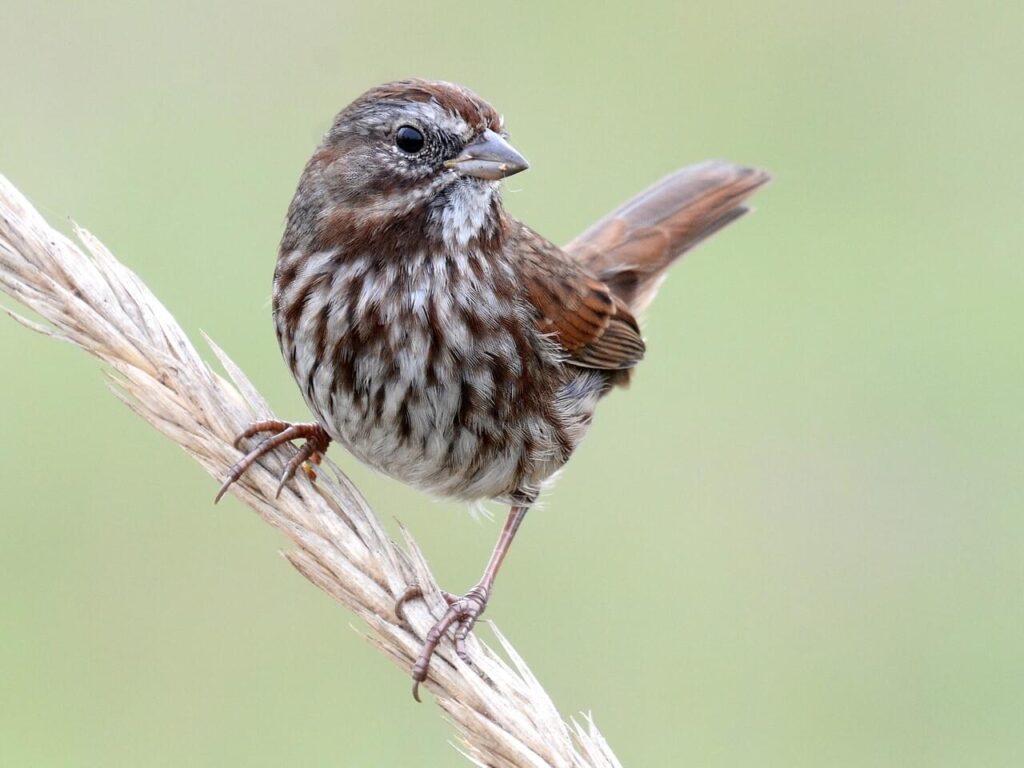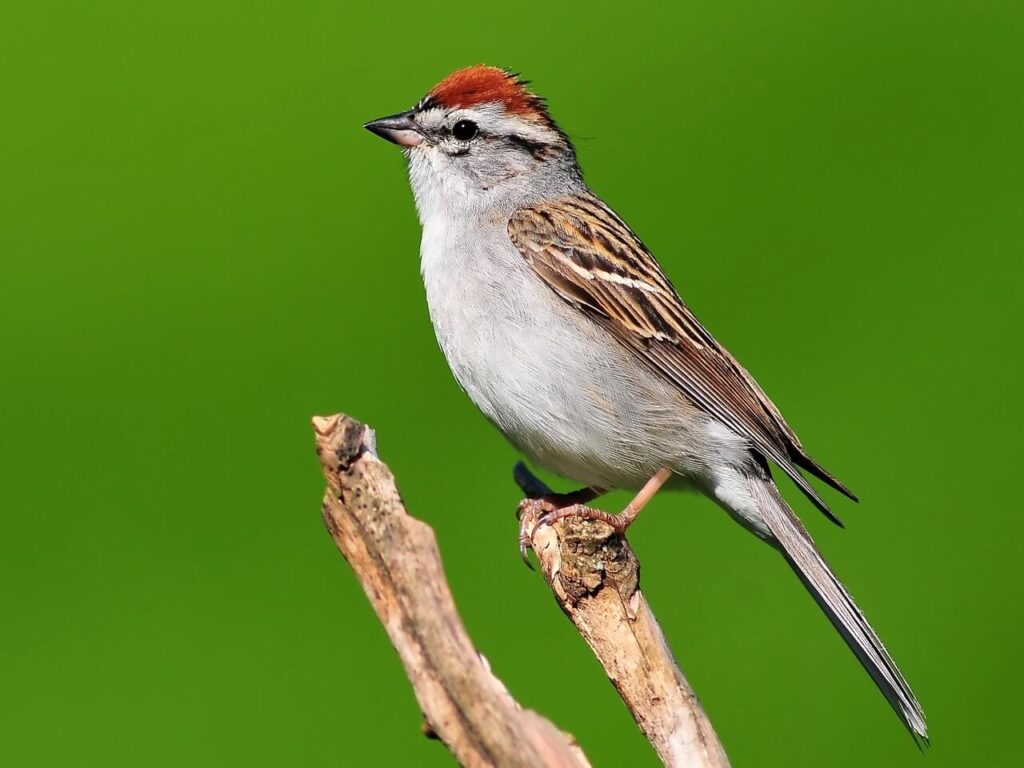D. Randy Weidner

March 19, 2023 – Tomorrow is the vernal equinox, the first day of spring astronomically. Ecologically, we are still pretty solidly in winter. We moderns use calendars to mark our way through the year. Primitive peoples, and those few humans still living indigenous lifestyles, undoubtedly relied on seasonal natural events as well as astronomical observations. Migrating birds are a natural phenomenon which is readily noticeable, and reflects seasonal change. With that in mind, I examined one group, the ubiquitous native sparrows, to see what they could tell me about the coming of spring.

Emberizidae is the scientific term for the family of New World Sparrows, and does not include the introduced House Sparrow (Passer domesticus). Emberizidae are those little brown birds that are the bane of amateur birders because they are small and blend into brushy backgrounds. They occupy varied habitats, consuming mainly seeds and insects. All have the interesting behavior of scratching and hopping backward as they search for food. Each has a distinctive song.

Here in the Finger Lakes, if you just consider sparrows that come to feeders, there are eight common Emberizidae which are not too difficult to identify visually. First look at the breast. If it is streaked, the bird is either a Song Sparrow (Melospiza melodia), or a Fox Sparrow (Passerella iliaca). Much commoner Song Sparrows usually have a noticeable mid-breast dark spot; while Fox Sparrows are large, distinctly reddish, with gray around the face and head. If the belly is white, and the rest of the bird gray to black, it is a Dark-eyed Junco (Junco hymenalis). If the breast is not streaked, but does have a dark central spot, and the upper beak is dark but the lower beak is yellow, it is an American Tree Sparrow (Spizelloides arborea). If the breast is totally without markings, turn your attention to the head. If there is a reddish cap, below which is a prominent white streak, and below that a black streak going through the bird’s eye, it is a Chipping Sparrow (Spizella passerine). If the breast is plain, or even has a tinge of color but not streaked, the head has a reddish cap but the face is gray, and the bill all yellow, it is a Field Sparrow (Spizella pusilla). If the breast is plain, and there is a white patch beneath the beak, and a spot of yellow between the beak and eye, you have a White-throated Sparrow (Zonotrichia albicollis). Finally, if the breast is plain, and the head has a thin white cap, bordered by a black streak, below which is a prominent white streak, it is the White-crowned Sparrow (Zonotrichia leucophrys).

Searching 13 years of my Project Feederwatch data, I found that certain native sparrows reliably reveal spring dates; but others were not helpful. Dark-eyed Juncos are here all year, so not helpful. American Tree Sparrows are only around in winter, mostly January and February. White-throated Sparrows could be here all through feeder season (mid-November through April), and sadly, were more reliably so in the past, but their presence is spottier in the past 3 years. And Fox Sparrows seem to stop only on migration, either in November or in March, with a rare sighting in January and February.

However, some other sparrows can signal the month by their arrival. Song Sparrows only show up at my feeder in March, as they did last week. The average date was March 14, with the range March 4 to March 28. Chipping Sparrows arrive in April, the average date being April 10. That said, I had the very rare sighting of a Chipper in January. The other April Sparrow is the Field Sparrow, the average arrival date being April 16. And finally, the White-crowneds always arrive the first week of May; and when they move on, I take down the seed feeders.

I wonder why these Emberizidae, closely related evolutionarily and in habits, vary in their appearance at my feeders. Obviously, some have adapted better to winter. As stated above, these birds eat either seeds or insects. Regarding those migrators, it would be interesting to discover if the later arrivals are more dependent on insects, which should be more numerous when they arrive. I would be interested to hear if other feeder watchers had similar observations concerning native sparrows. Happy birding.
